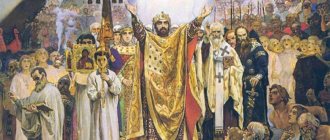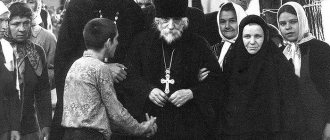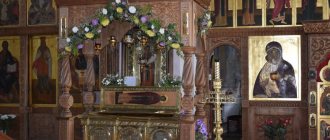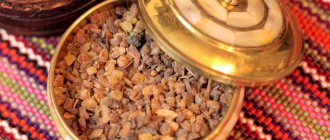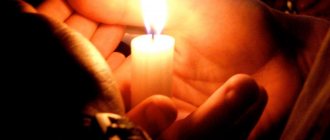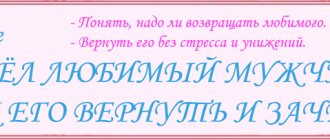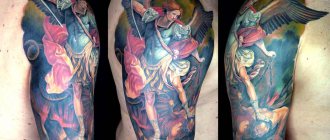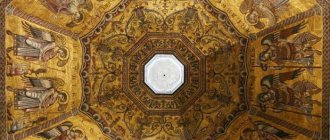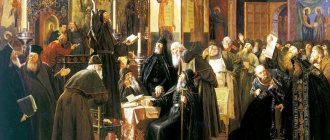The modern image of an angel in the public consciousness is a young man in a white tunic and a thin golden halo with huge bird wings. However, artists did not immediately begin to paint heavenly messengers in exactly this way. Although they are mentioned 273 times in the Bible, all descriptions of seraphim and cherubim are fragmentary and do not contain detailed instructions on how they should be depicted. The Greek “angelos” - “messenger” - rather indicates the function of these creatures, who are also more often called simply “men”.
The lack of detailed portrait characteristics has given rise to many interpretations of the image. This is how balding and wingless male angels, effeminate or asexual winged creatures, zoomorphic four-headed, four-legged and four-winged chimeras and non-anthropomorphic wheels with eyes appeared.
Beard and bald head: male angel
In one of the psalms, angels are described as beings made of fire and wind. In Daniel's vision, these creatures are able to move through the air: “The man Gabriel ... flew quickly and touched me about the time of the evening sacrifice” (Dan. 9:21). The Gospel of Matthew adds that the angel “has the appearance of lightning” and his clothing is “white as snow” (Matthew 28:3). In general, these are the most detailed descriptions of the appearance of heavenly messengers.
On early Christian frescoes and marble sarcophagi, angels, due to the lack of detailed information about their appearance, looked exactly like people. The first such images appear in the second half of the 3rd century on the walls of the Roman catacombs. Angels cannot be distinguished from ordinary people unless you know the plot. For example, in Priscilla's dungeon, Gabriel, bringing the good news to the Virgin Mary, looks like a man with short hair in a white dress. The three angels in the scene of Abraham's hospitality in the catacombs on Via Latina are ordinary young men who do not stand out in any way from the background of the other characters in the frescoes.
We see the same male images in biblical episodes depicted on sarcophagi. Sometimes some of them are even bearded or bald, like the angel on the 4th century tomb from the Pio Cristiano Museum in the Vatican, who stops the hand of Abraham sacrificing his son to God. Apparently, the artists wanted to show that the messengers of heaven could appear on earth and speak with people, which means they had to look anthropomorphic so that people would not be afraid of them.
Seraphim
The six-winged angel Seraphim is closest to God and burns for Him with strong love, burns with a bright fire. The word "seraphim" is translated from Hebrew as "bright."
Serafino has three pairs of wings. On one it soars and flies. The second pair serves to cover your body from the fire emitted by the Almighty. Seraphim's other two wings are covered with a fiery gaze, with which he can ignite others.
Images of Seraphim are traditionally made in bright red colors, like flying fire. If there were battles, the Seraphim turned into fiery snakes and burned the enemy.
The duty of the Seraphim is to protect God and kindle love for him in the hearts of people, purify the soul with divine fire, and inspire preaching.
Seraphim are first-class angels. They tightly surround God, completely covering him with their bodies, and continuously chant and glorify the Almighty.
Flight and androgyny: winged angel
By the end of the 4th century, it became important for artists to distinguish angels from people, and therefore the need for special visual markers arose. Since the Bible only briefly mentioned that heavenly messengers were able to fly, theologians began to pay close attention to this detail already in the 2nd and 3rd centuries.
Tertullian wrote that both angels and demons are winged. John Chrysostom at the end of the 4th century argued that wings allow God's messengers to quickly descend from heaven to help people, although they do not relate to their immaterial nature. The appearance of the angels was identified with the appearance of the Holy Spirit, whom the Lord also repeatedly sent as a winged herald to earth.
At some point, these two images in the minds of theologians merged so much that in the scene of the heavenly intercession of the Archangel Michael for the three youths in the fiery furnace, a dove is depicted, and not an anthropomorphic creature. In their appearance, the angels became increasingly similar to God and “moved away” from man.
But over time, the ranks of admirers of heavenly messengers expanded, and the theologian Novatian writes that Christ Himself belonged to the latter.
At the Council of Laodicea, held in the mid-4th century, it was decided to ban the cult of angels as idolatry, and to punish Novatian for his heresy.
Now the artists faced a difficult task - not only to highlight the messengers of heaven among people, but also to show their difference from God, who wore a halo and was surrounded by a mandorla-like radiance, and from Christ, incarnated on earth in the form of a man. A solution, however, was quickly found - to give the heavenly messengers wings, thereby emphasizing their function, as well as their position between the Lord and people, between heaven and earth. In this way, it was possible to both fulfill the instructions of the Council of Laodicea and reveal the syncretic nature of these creatures, which is almost not described in the Bible.
In addition, in the Roman pre-Christian tradition there were suitable iconographic prototypes, for example, the image of the winged goddess of victory Nike, dressed in peplum. It regularly appeared on the reverse of gold coins between portraits of Roman or early Byzantine co-throne emperors with crowns and halos - for example, between Valens and Valentinian I. These images served as the basis for the first Christian images of saints, and then the Trinity.
For example, on one golden bottom Christ crowns the apostles Peter and Paul. This scene is exactly copied from a coin, where the goddess Nike takes the place of the Savior. On Roman money, the image of the royal trinity with a central winged character, in turn, could have come from ancient Egyptian art, where in the same manner back in the 2nd century BC. e. the stone gems depicted Bayit (one of the incarnations of Horus), Hathor (the patroness of motherhood) and Akori (the goddess of the power of the pharaoh).
Gradually, the image of winged creatures, copied from the goddess Nike and genetically dating back to the iconography of Roman coins and ancient Egyptian gems, became standard for Christian culture.
In the 5th century there are still unusual works of art in which old and new canons are mixed. For example, on an Italian ivory panel kept in the British Museum in London, we see a heavenly messenger in a toga with wings, a full beard and mustache, blessing the baptism of Jesus. However, in the future, angels will never look so courageous again.
Perhaps, among other things, this is due to the fact that viewers of the 4th–5th centuries understood that such an image was of a syncretic nature and goes back to both the descriptions of biblical “men” and the image of a pagan goddess. The heavenly messengers now had a kind of gender neutrality, supported by Scripture (Luke 20:27–36) and the authority of theologians: Jerome of Stridon, for example, argued that God and the angels could not have a gender.
***
The Holy Scriptures reveal only a fraction of the precious knowledge about the heavenly realm in which God and his heavenly family dwell. But even what we know about it leaves us in awe. Why did God tell about the Cherubim?
On the one hand, to show that all the Angels in heaven know about our problems and care about us. On the other hand, the Creator makes it known how He builds relationships with heavenly sons. Mutual love, harmony, exciting work and complete harmony of relationships - this is the reality in which Angels live, giving us an example of faithful service and revealing what our future union with God will be like.
Victor Glebov
Wheel and beast-headed monster: chimera angel
Perhaps the only place in the Bible where angels are described in any detail is the vision of Ezekiel. At first, the prophet does not indicate what kind of creatures he saw, and speaks of strange creatures with four heads - a calf, a man, an eagle and a lion:
“...their appearance was like that of a person; and each one had four faces, and each one had four wings; and their legs were straight legs, and the soles of their feet were like the sole of a calf’s foot, and they glittered like bright brass. And the hands of men were under their wings, on their four sides; and they had faces and they had wings—all four of them; their wings touched one another; During their procession they did not turn around, but walked each in the direction of their faces. The similarity of their faces is the face of a man and the face of a lion on the right side of all four of them; and on the left side the face of a calf in all four and the face of an eagle in all four. <…> And I looked at the animals, and behold, on the ground next to these animals, there was one wheel in front of their four faces. <…> When they walked, they walked to their four sides; They didn’t turn around during the procession. And their rims - they were high and terrible; all four of their rims were full of eyes around” (Ezek. 1:5-18).
And only in Chapter X will it be said that this is one of the angelic ranks - the cherubim:
“And the Cherubim lifted up their wings, and were lifted up from the earth before my eyes; when they left, the wheels were beside them; and they stood at the entrance of the eastern gate of the House of the Lord, and the glory of the God of Israel was above them. These were the same animals that I saw at the foot of the God of Israel at the river Chebar. And I knew that they were Cherubim” (Ezek. 10:19–20).
Already in the early Middle Ages, church artists tried to depict the angels described by the prophet as close to the text as possible. The four-shaped creatures began to be called tetramorphs - and they were considered a special type of cherubs that surround the Lord's throne. Because Ezekiel's "word portrait" was extremely intricate and difficult to visualize, Christian artists over the centuries painted them in many different ways.
For this reason, on the pages of medieval Bibles there are often images of creatures with the heads of a man, a bull, a lion and an eagle. In their bodies, legs are adjacent to paws or wheels dotted with eyes, and arms are adjacent to wings.
Sometimes we see not a single “organism”, but wings fitted to each other, to which - with more or less anatomical convincingness - four heads are attached, as well as wheels that turn the tetramorph into the carriage of the Lord. This is how the angel is depicted in the earliest surviving image of this kind from the Syriac Gospel of Rabula of 586.
However, more often the basis was still the figure of an angel (in our usual understanding of the word), to which three other heads were attached. Sometimes, in an effort to emphasize the special nature of the tetramorph and, perhaps, to downplay its monstrousness, artists tried to disguise the three animal mouths, drawing them, for example, as part of the hairstyle of a cherub.
However, not all tetramorphs are designed based on the human figure. There are many images where they appear in animal form - as bull-like beasts with four different heads, wings and arms growing directly from the body, or as a winged hybrid with four legs and four heads, resembling not a living creature, but an object of temple utensils.
Since the 12th century, such Divine monsters have sometimes been contrasted with devilish ones, for example, the beast with seven heads and ten horns, which in the Revelation of John the Theologian serves as a throne for the Babylonian harlot. This is how an allegorical image of the Church appears riding on a tetramorph - a hybrid of a man, a lion, a calf and an eagle. In this context, it symbolizes the testimony of the four Gospels on which Christian teaching is based.
Along with images of chimerical creatures, there were also illustrations of four separate angel-like beasts. In the New Testament Revelation of John the Theologian, the tetramorphs from Ezekiel’s vision are reinterpreted and “break up” into separate “animals”:
“...in the middle of the throne and around the throne were four living creatures, full of eyes in front and behind. And the first living creature was like a lion, and the second living creature was like a calf, and the third living creature had a face like a man, and the fourth living creature was like a flying eagle. And each of the four animals had six wings around, and inside they were full of eyes; and they have no rest day or night, crying out: Holy, holy, holy is the Lord God Almighty, who was, who is, and who is to come” (Rev. 4:6-9).
In the Christian tradition, these images have been interpreted as symbols of the four evangelists. According to the most common version, the angel stood for Matthew, the lion for Mark, the bull for Luke, and the eagle for John. Moreover, in some images, four creatures “merged” into a tetramorph in order to emphasize the idea of the unity of the apostolic testimonies about Christ.
For example, in the generalized image of the evangelists we see zoomorphic motifs: a bearded man has a pair of human legs shod in sandals, but in front, as if from behind a screen, hang eagle and lion paws and bull hooves.
Dissimilar elements are fused into one body, which makes it look like the tetramorph from Ezekiel's vision.
In other images, common since the beginning of the 5th century, the symbols of the evangelists are not at all anthropomorphic. Thus, on the mosaic of the apse of the Roman Basilica of Santa Pudenziana we see Mark the Lion in human clothing with wings behind his back. In the Middle Ages, they would appear in both zoomorphic and anthropomorphic symbols of the evangelists, demonstrating their angelic essence. And in the Spanish manuscripts of the Apocalypse with the interpretation of Beatus of Lieban (8th century), biographers of Christ were sometimes depicted with wheels instead of legs.
Prayer
It is worthy to eat as truly the blessedness of Thee, the Mother of God, the Ever-Blessed and Most Immaculate and the Mother of our God.
We magnify Thee, the most honorable Cherub and the most glorious without comparison, the Seraphim, who gave birth to God the Word without corruption. Translation: It is truly worthy to glorify You, Mother of God, always blessed and blameless and the Mother of our God. You are worthy of greater honor than the Cherubim, and in Your glory you are incomparably higher than the Seraphim. Without violating your purity, You gave birth to God the Word, and as the true Mother of God we magnify You.
Cherubic Song: the meaning of the text
The song is performed in the temple during the Great Entrance; Emperor Justin II included it in the rite of the Liturgy in 573.
This is its meaning: everyone who is in the church should become like the Cherubim Angels, glorifying the Lord and putting personal interests in second place.
Living fire and a face with wings: angelic ranks
Having systematized the visions of Ezekiel and other biblical evidence, the theologian of the 5th–6th centuries Pseudo-Dionysius the Areopagite created a classification of nine angelic ranks. He placed the “cherubim” contemplating the throne of the Most High in second place after the fiery “seraphim”, personifying the flame of Divine love. Then came the “thrones” bearing the throne of the Lord.
Next came the “dominions”, powerful and god-like “forces”, constantly rising in their greatness, possessing the spiritual energy of the “authorities”, responsible for the sacred order of the “superiors”, governing the lower ranks of the “archangels” and transmitting Divine revelations to people “angels”.
Under the influence of the theology of the Areopagite and other theologians, artists began to paint the messengers of heaven in a differentiated manner, taking into account their rank. Seraphim were depicted with four or six fiery wings, and sometimes instead of flames, illustrators simply painted their plumage in red, and then these characters resembled exotic birds.
Cherubim were represented in the same way, only without fire, and sometimes their legs and arms, and sometimes their faces, were completely hidden by giant wings. Thrones could be drawn as winged wheels with eyes, or as anthropomorphic creatures holding a huge throne in their hand.
The remaining ranks were usually depicted as similar to the previous ones. Visual hierarchies arose: they tried to show angelic groups as different beings sitting sequentially in the nine heavens (sometimes they also painted the tenth “shelf” - the place of the absent Lucifer and his minions). Such images existed not only in the West, but also in Orthodox icons: on one of them we see all nine ranks of angels depicted in completely different ways.
What they really look like
Photo images
None of the people knows the true appearance of Angels of any rank. All their representations, presented in the Holy Scriptures and in paintings, are created in order to describe them in a language that we can understand. Cherubs do not have real wings like birds. They are not hybrids of humans and animals, but carriers of a higher form of life, inaccessible to our imagination.
Eros, putti and arquebusiers: cutie angel
The ancient image of Eros had a huge influence on early Christian art. A small winged creature with a bow became the “model” for drawings of a soul soaring into the sky.
In the Middle Ages, the iconography of the God of Love - a distant descendant of the ancient Eros - thanks to the spread of his image in fiction (for example, in the Romance of the Rose of the 13th century), began to converge with the image of Christ.
He was depicted with a bow and arrows, and his head was decorated with a crown or even a colored halo, which “rhymed” with wings similar to those of an angel. Eros could be depicted in a mandorla, although usually it surrounds only the figure of God or the Virgin Mary. To show the similarity of love for the Lord and for one's neighbor, Christ was sometimes painted with a coal in his hand (a typical attribute of Cupid - a symbol of the passion burning in the heart) or even piercing the hearts of his followers with arrows.
During the Renaissance, these motives develop. Now putti were painted like Eros - winged babies with halos, which in different contexts could represent the souls of the departed, serve as an allegory of death and resurrection, and also act as angels.
In the paintings of Baroque artists, winged little ones, reminiscent of putti, dressed to the nines - older, but with an androgynous appearance, rosy cheeks and naked butts - play musical instruments.
And in colonial South America, pomaded angels dressed in the latest fashion were given arquebuses, “enlisting” them in the detachment of God’s army. However, the move is not new: already in the Middle Ages, the archangel of the heavenly army, Archangel Michael, was depicted in full battle garb and with weapons.
Prayers
“Even though the Cherubim secretly form, and the life-giving Trinity sings the thrice-holy hymn, let us now put aside every care of this life. For let us raise up the King of all, Invisibly angelic Dorinosima Chinmi. Alleluia." In Russian:
(We), who mysteriously depict the Cherubim and sing the Trisagion hymn to the Life-giving Trinity, let us now leave all worldly worries so that we may receive the King of all (rational beings), invisibly accompanied, like bodyguards, by armies of Angels. Praise God, praise God, praise the Lord.
How to understand the words from the “Song of the Mother of God”: “The most honorable is the Cherub and the most glorious without comparison is the Seraphim”
With these words, the Orthodox express great respect to the Virgin Mary as the one who, with her glory and honor, exceeds the highest angelic beings.
If the Seraphim look at the flame of God's Love, then Mary carried it within herself when the Son of God grew inside her. Cherubim comprehend the light of Divine knowledge. But Mary gave birth to this light - Jesus Christ.
Prayer “It is worthy to eat” with translation
Angels of Art Nouveau
In the era of classicism, artists glorified the image of the majestic heavenly messenger, ranging from an antique, languid youth in a toga to a brutal knight. However, a new character suddenly appeared - a female angel: she was portrayed both as a reserved lady, in the spirit of that time, and as a charming winged darling.
Now this image looks absolutely natural, but before the Victorian era no one would have thought of painting a heavenly messenger in this way. Most likely, this type appeared as a result of a mistake by artists, who often saw in cemetery sculpture a similar figure of a soul with wings and did not pay attention to the context of traditional sacred art.
But in the 20th century this stereotype was broken. Dali, Picasso, Kandinsky, Chagall wrote heavenly messengers who invariably replenished the Divine host that had already grown over two millennia. But perhaps the most famous image in this series was created in 1920 by the German artist Paul Klee. His “Angel of History” served as the starting point for the philosopher Walter Benjamin, who proposed his interpretation of world progress. He saw in the unusual figure with his hands raised upward, as if at gunpoint, not good news, but a prophecy of catastrophe and the destruction of the familiar way of life by an inhuman war:
“This is what the angel of history should look like. His face is turned to the past. Where for us there is a chain of upcoming events, there he sees a complete catastrophe, constantly piling ruins on top of ruins and dumping it all at his feet. He would have stayed to raise the dead and mold the wreckage. But a gale rushing from paradise fills his wings with such force that he can no longer fold them. The wind carries him uncontrollably into the future, to which his back is turned, while the mountain of rubble in front of him rises to the sky. What we call progress is this squall.”
Today in popular culture there are several images of angels. The type of celestial warrior, dating back to medieval art, has become popular, which can now be found in fantasy literature and computer games. Not less often, the messenger appears in the form of a beautiful woman, as if she had stepped out of a Pre-Raphaelite painting. A wingless bearded angel, a multi-headed chimera angel, a plump angel-Eros - the merciless wind of art progress carries them further and further into the depths of the past, which is now remembered only by art historians and those interested - like you and me.
Icons
On the icons, the Cherubim are presented to the viewer in approximately the same way as the Seraphim. These are creatures with six wings and a human head. According to tradition, Seraphim are depicted with scarlet wings, while Cherubim have blue wings.
Tikhvin Icon of the Mother of God. XIX century Material: Casting, enamel, copper. Dimensions of the icon: height 6.5 cm, width 5 cm. Old Believer copper cast plastic KP 4476/018 ©Central Museum of Ancient Russian Culture and Art named after Andrei Rublev.
However, not all icon painters followed this rule. Some ancient images depict Seraphim, while the caption says they are Cherubim. The opposite error also occurs. Most often, Cherubim are depicted next to other saints.
Other images
On the walls of the Vladimir Cathedral in Kyiv, Viktor Vasnetsov depicted the Cherubim in an “disassembled form.” Each face of the Angel appears as a separate being.
On the facade on the southern side of the capital's temple, built in honor of Zosima and Savvaty of Solovetsky, the Holy Cherub is depicted.
You can admire the amazingly beautiful painting with Seraphim and Cherubim if you visit the Church of the Life-Giving Trinity in the Shatursky district (Moscow region).
There are many other images of the heavenly sons of God in Orthodox buildings.
Cherub and Macarius the Great. Icon
Middle or second degree of the angelic hierarchy
The second degree of the dominance hierarchy is occupied by Dominations, Forces and Powers. They protect cities, villages, secular and spiritual authorities, churches, monasteries. In this way they serve Their Creator, fulfilling His holy will. Dominions, powers and authorities are appointed by God not only to protect cities, bishops, churches, earthly rulers, but even entire countries and states.
Lordship gives earthly rulers wisdom in managing earthly affairs. He teaches you to control your feelings, get rid of unnecessary desires and passions, and subordinate the flesh to the spirit. It also helps to dominate your will and overcome any temptation.
The forces are filled with the Supreme strength and carry out the Supreme will. They create great miracles and send the grace of miracles to the saints of God. With their help, they can cure diseases, predict the future and help those who need it. Strength strengthens any Christian in times of sorrow and trouble.
Power has influence on dark forces, tames the devil's power. They also protect people from sent temptations. The authorities do not allow the dark forces to harm anyone to the extent that they would like.
Spirits also assist workers in spiritual matters and labors. The authorities protect them so that they do not lose the spiritual kingdom. They fight temptations and seductions, help repel the evil plans and slander of enemies.
Messenger of God
Before starting a conversation about the angelic ranks and tracing the differences between them, we should dwell on who the angels are and what their role is in the existing world order. This word itself, which came to us from the Greek language, is translated as “messenger” or “messenger”.
In all Abrahamic religions, that is, those that recognize the union concluded by Patriarch Abraham with God, and this is Christianity, Islam and Judaism, the angel is presented as an incorporeal being, but at the same time possessing reason, will and consciously choosing the path of serving God. In the visual arts, there has been a tradition of giving angels the appearance of anthropoform (human-looking) creatures endowed with wings.
There are several classifications of demons:
In accordance with the 7 deadly sins, there are 7 main demons:
- Lucifer - Pride
- Beelzebub - Gluttony
- Leviathan - Envy
- Asmodeus - Lust
- Mammon - Greed
- Belphegor - Laziness
- Satan - Anger
The classification proposed by Stephanie Connolly is more convenient for practitioners who summon demons for specific purposes. According to it, the main spheres of influence of demons are as follows:
- Love-Lust (Asmodeus, Astaroth, Lilith, etc.)
- Hatred-Revenge-Wrath-War (Andras, Abbadon, Agaliarept, etc.)
- Life-Healing (Verrin, Verrier, Velial, etc.)
- Death (Eurynom, Baalberith, Babael)
- Nature (Lucifer, Leviathan, Dagon, etc.)
- Money-Prosperity-Luck (Belphegor, Beelzebub, Mammon, etc.)
- Knowledge-Secrets-Witchcraft (Ronwe, Python, Delepitora, etc.)
Bearers of wisdom and creators of good endeavors
The middle triad is opened by the angelic rank ─ dominion. This, according to the classification of Pseudo-Dionysius the Areopagite, is the fourth rank of angels. They embody the freedom that underlies the life of the entire visible world and is proof of their boundless and sincere love for the Creator. Dominions, like thrones, are in constant interaction with earthly rulers, giving them wisdom and directing their thoughts only to good endeavors.
In addition, these servants of God help people overcome the impulses of passion that overwhelm them and fight the temptations of the flesh, not allowing it to dominate the spirit. Dominions got their name due to the fact that they are entrusted with the control of all other angels, whose position on the hierarchical ladder is lower.
In other sources Edit
In mythology Roses of the world Edit
Main article: Angels (Rose of the World)
Angels of the Highest Circle:
- Archangels
are the guardians of strength and wisdom, also the most terrible punishment of the Lord [
source not specified 959 days
] - Cherubim
are the guardians of light missions, - Seraphim
are the guardians of some human communities (churches, communities, ethical associations), - Thrones
are the guardians of nations.
Angels of the Lower Circle:
- Astrals
or
Powers
are the creators of the materiality of Enrof, - The forces
are the creators of the materiality of the sakuala of daimons, - The Dominions
are the creators of the materiality of the worlds of enlightenment, except Olirna, - The beginnings
are the creators of the materiality of the zatomis,
The angels of the lower circle were once angelic humanity and lived in Olirna. The Sirins, Alkonosts, and Gamayuns of Christian metacultures become archangels.
The Rose of Peace also mentions angels of darkness.
In The Urantia Book Edit
The Urantia Book says that angels belong to the category of ministering spirits.
Angels in The Urantia Book are classified as follows:
- Supernaphim
- Seconathim
- Tertiaphim
- Omniaphim
- Seraphim
- Cherubim and dignitaries
As the Urantia Book suggests, there are other undisclosed orders of angels.
Mentions in the Old Testament
Anyone who has read the Book of Genesis remembers that it describes a cherub with a fiery sword who guards the entrance to Paradise. And David writes that these angels served as a kind of transport on which God moved. In many places in the Old Testament you can read that he sits on cherubim. The prophet Ezekiel also mentioned these creatures. Describing the fall of the ruler of Tire, he notes that he looks like a cherub, whose robe is strewn with shining precious stones. God expelled him from Paradise to earth because he became proud, thereby sinning. An unenviable fate befell him. Yes, it turns out that even a cherub angel can commit a sin. This makes him look like a man.
Heavenly support of earthly rulers
And finally, another angelic rank included in the highest triad - thrones. The name of the group of these disembodied spirits comes from the fact that it was they who were given the grace of God to support earthly rulers and help them carry out just judgment over their people. In addition, the peculiarity of the thrones is that the Creator was pleased to embed in them the knowledge of the paths along which human society is destined to move and develop.
It is generally accepted that thrones never interfere in human conflicts, but at the same time they are close to us, helping us gain spiritual insight and be filled with love for God. All representatives of the first highest triad are capable of entering into direct communication with a person.
Executors of the Creator's will
The next stage of the middle triad is occupied by forces. From the treatise of Pseudo-Dionysius it is known that this category consists of angels, gifted with an indestructible divine fortress and capable of fulfilling the will of their Creator in the blink of an eye. They are the conductors of God’s grace, given to people through their prayers and petitions.
All the miracles that the Lord shows to his children occur with their direct participation. Being conductors of divine energy, the powers bring pious Christians deliverance from ailments and the fulfillment of their deepest desires. They also help the chosen sons of God to see the future. An important feature of the powers is the ability to strengthen a person’s spirit, give him courage and ease grief. Thanks to the angels standing on this ─ fifth hierarchical level, people cope with their life problems and overcome adversity.
Fighters against dark forces
They complete the middle triad of power. They are entrusted with an extremely important mission - to keep the keys to the dungeon in which the devil is imprisoned, and to put obstacles in the way of his countless army. They protect the human race from demonic obsessions and help fight temptations sent by the enemy of the human race.
Without ceasing the fight against the fallen angels, who are the embodiment of evil, the authorities at the same time protect pious people, confirming them in virtue and filling their hearts with love for God. They are entrusted with the responsibility of driving away bad thoughts from them, strengthening them in good intentions, and escorting those who have succeeded in serving God after death to the Kingdom of Heaven.
